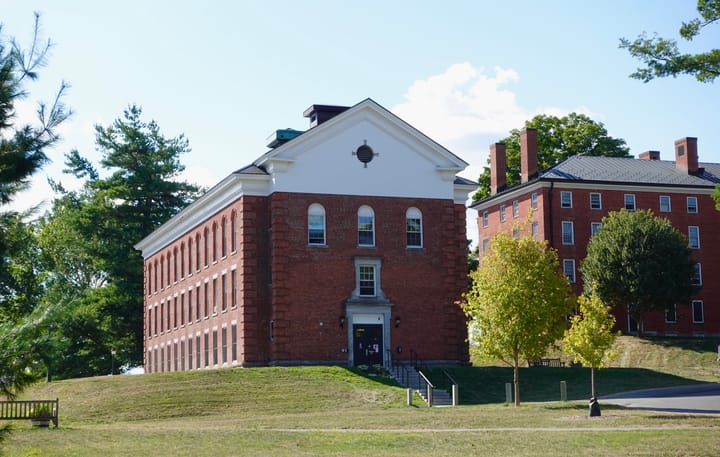Proposed Town Budget Estimates $3 Million in Cuts for Public Schools
Budget cuts are expected for the town’s public schools in the wake of declining enrollment and rising costs. 17 teaching positions are expected to be eliminated as a result of the cuts.

As evidenced by recent protests, Amherst residents have grown increasingly concerned over approximately $3 million in proposed budget cuts to the town’s public schools.
The proposed Town budget for the 2026 fiscal year (FY26) includes an estimated $1,561,314 in cuts for Wildwood, Ft. River, and Crocker Farm elementary schools, and an additional $1,391,998 deficit for the regional middle and high schools.
The Town Council set a 3.5% increase for FY26 for all department operating budgets across the four municipal sectors: the regional schools, elementary schools, municipal government, and library. However, this increase does not align with the schools’ projected rising costs for next year, resulting in a budget deficit.
The proposed cuts would eliminate at least 17 teaching positions. In the town district, elementary schools are expected to reduce special teachers (art, music, physical education, and library), band, and orchestra staff to 0.9 full-time equivalents (FTE), cut four special education teachers across the three schools, eliminate three classroom teachers, and remove two paraprofessionals. Additionally, the Intensive Decoding and Fluency program, which provides targeted reading instruction for young children with reading difficulties, will be discontinued.
According to the Town Council FY26 budget guidelines, the budget cuts are due to the decline of student enrollment in the Amherst district.
Cathleen Mitchell, an organizer with Support Our Schools (SOS) Amherst, a parent and volunteer-led organization advocating against the cuts, pointed out that similar declines in student enrollment have also been observed in 232 other districts in Massachusetts. She explained that this decline in student enrollment affects how the state allocates funding, putting these districts at a disadvantage. However, she argued that this should not justify reducing school funding.
Mitchell explained that, although student enrollment is declining, the per-pupil cost of education has increased over time, due partially to a shift in the student population, with schools having more high-need students.
“Although we’ve lost 40% of our student body [between 2004 and 2024], the number of students we have who are in this category called “high need” — they’re English language learners, students with disabilities and low-income students — that number of students has not declined at all,” Mitchell said.
According to Mitchell, around 50% of Amherst public school students are classified as high-needs students, and around 25% are classified as students with disabilities. “These are students who require a lot of services, and the [state] funding for these services does not keep up with the true cost of educating our students in Amherst,” she said.
Professor of History Ellen Boucher, a parent and member of SOS Amherst, also highlighted the fact that education has become more expensive over time.
“It used to be that you’d buy textbooks for students, and those textbooks, you could use them for five or 10 years. But now the pedagogical model is that you pay for a database, and you have to keep paying for that database. That’s just an expense that didn’t exist a while ago,” she said.
Echoing other residents’ concerns, Boucher believes that reducing special teachers to 0.9 FTE positions will significantly impact elementary school students, as these teachers accompany students through multiple grades, developing strong bonds with them. She also expressed concern over the proposed elimination of the intensive reading intervention specialist position, which she emphasized is crucial for students with reading disabilities, dyslexia, or other speech and language delays.
At the middle school level, Boucher said that a major concern regarding teacher cuts is the disruption of the “teams” structure. Currently, students stay with the same team of teachers for two years, a system designed to distribute teaching responsibilities and create a stable and supportive learning environment for students. If the proposed cuts move forward, one of these teams is likely to be eliminated. Boucher warns that cutting five core educators will not only affect school culture and student experience but will also overburden the remaining staff, likely leading to a decline in teaching quality.
“I think it’s going to make the jobs of the teachers much more work intensive,” Boucher said. With larger class sizes, she expressed concern over instances of bullying and harassment being overlooked in the classroom, “I think that those instances are potentially going to get missed, not because the teachers aren't doing a good job, just because they're overworked. I'm worried that it's going to be really difficult to retain teachers when their jobs are getting harder and less fulfilling,” Boucher said.
Interviewees also expressed dissatisfaction with how funding increases are equally distributed across the town’s four municipal sectors, a process that is not adopted by other cities, like Northampton. Both Mitchell and Boucher argued that allocations should be based on a needs assessment of each sector.
“I would like to see a model that was more attentive to the annual needs of those different municipal services … I would like to see a budgeting process that was attentive to those that didn’t give an across-the-board increase, and thought about the kind of differences between the departments and their needs,” said Boucher.
According to Mitchell, there’s an added challenge in the fact that Amherst is home to two tax-exempt institutions, Amherst College and UMass Amherst, which leads to a relatively low amount of tax revenue available to support town services.
“There [are] parents and community members who would like to see UMass and Amherst College contribute more than they currently are financially to the community. Right now we are grateful that there’s a strategic partnership agreement with both institutions, which has not always been the case, but compared to some of Amherst College’s peer institutions, with similar financial situations, we get relatively little compared to what some other communities get,” Mitchell said.
Boucher acknowledged that the new strategic agreement with the town is a great start, but she hopes it’s not the end.
“I hope that this will continue to be an ongoing conversation about how the college can support the town financially, and that at the end of this three-year agreement, we'll see an even more robust and bigger agreement,” she added.
Discussions on the budget cuts are still ongoing, with a final decision expected by June 30. Parents and advocates remain hopeful that the Amherst School Committee will push for a larger funding increase.
“A community without thriving public schools is a different type of community, and I’m not sure if that’s where people are really willing to go. But I think that there’s some kind of magical thinking that we can reduce costs without affecting quality, and I’m not sure if that’s the case,” said Mitchell.





Comments ()